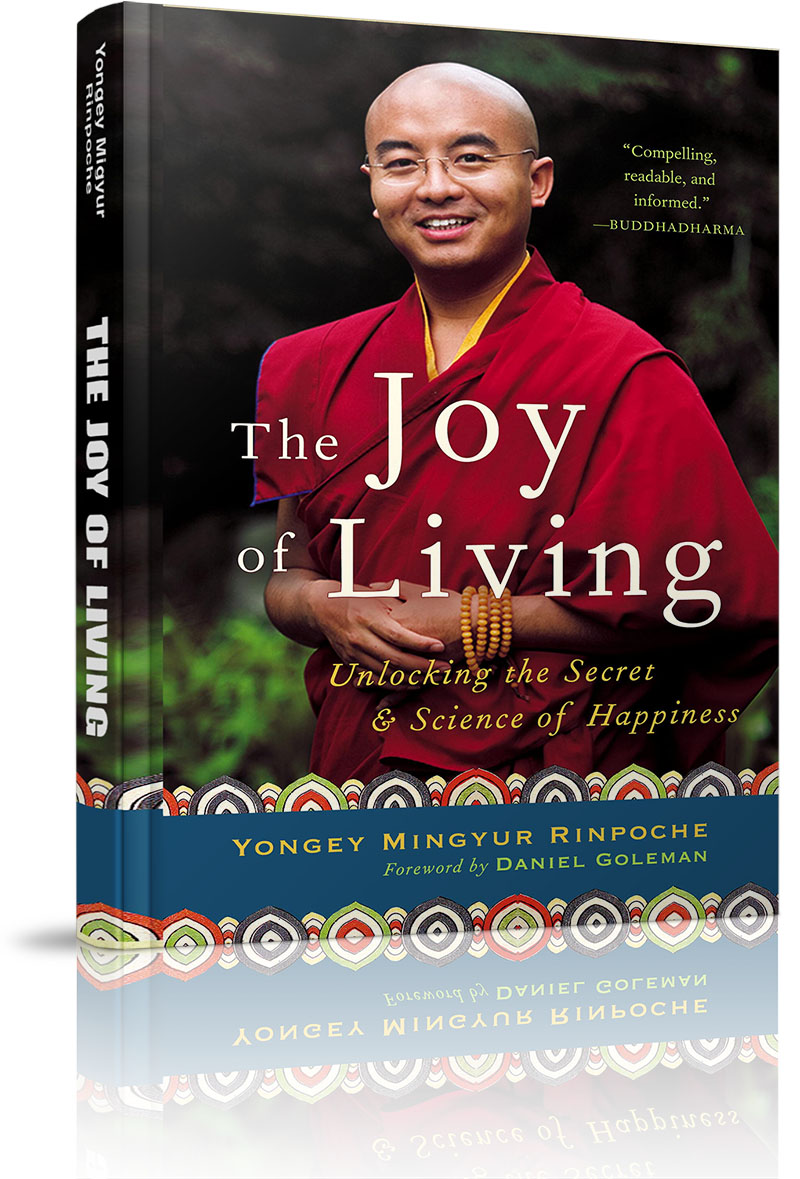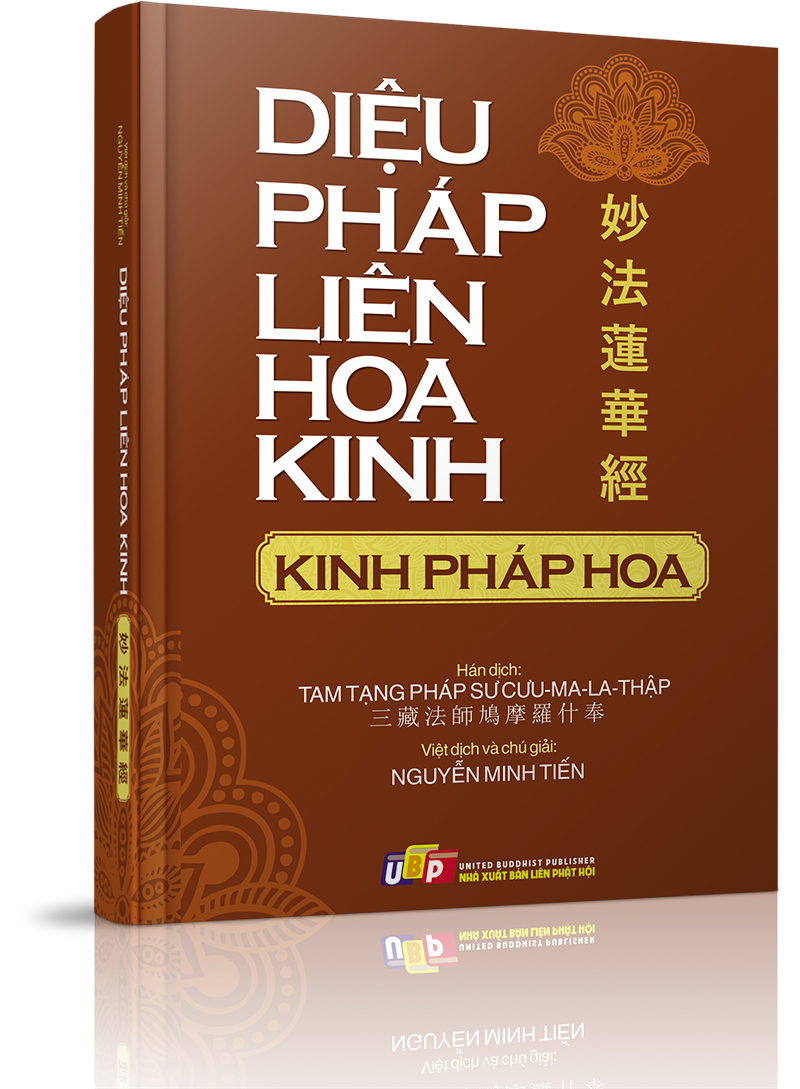Hạnh phúc đích thực không quá đắt, nhưng chúng ta phải trả giá quá nhiều cho những thứ ta lầm tưởng là hạnh phúc. (Real happiness is cheap enough, yet how dearly we pay for its counterfeit.)Hosea Ballou
Phải làm rất nhiều việc tốt để có được danh thơm tiếng tốt, nhưng chỉ một việc xấu sẽ hủy hoại tất cả. (It takes many good deeds to build a good reputation, and only one bad one to lose it.)Benjamin Franklin
Hãy nhã nhặn với mọi người khi bạn đi lên, vì bạn sẽ gặp lại họ khi đi xuống.Miranda
Tinh cần giữa phóng dật, tỉnh thức giữa quần mê. Người trí như ngựa phi, bỏ sau con ngựa hènKinh Pháp cú (Kệ số 29)
Nếu muốn có những điều chưa từng có, bạn phải làm những việc chưa từng làm.Sưu tầm
Điều người khác nghĩ về bạn là bất ổn của họ, đừng nhận lấy về mình. (The opinion which other people have of you is their problem, not yours. )Elisabeth Kubler-Ross
Hạnh phúc đích thực không quá đắt, nhưng chúng ta phải trả giá quá nhiều cho những thứ ta lầm tưởng là hạnh phúc. (Real happiness is cheap enough, yet how dearly we pay for its counterfeit.)Hosea Ballou
Điều kiện duy nhất để cái ác ngự trị chính là khi những người tốt không làm gì cả. (The only thing necessary for the triumph of evil is for good men to do nothing.)Edmund Burke
Hào phóng đúng nghĩa với tương lai chính là cống hiến tất cả cho hiện tại. (Real generosity toward the future lies in giving all to the present.)Albert Camus
Tôi biết ơn những người đã từ chối giúp đỡ tôi, vì nhờ có họ mà tôi đã tự mình làm được. (I am thankful for all of those who said NO to me. Its because of them I’m doing it myself. )Albert Einstein
Mục đích của đời sống là khám phá tài năng của bạn, công việc của một đời là phát triển tài năng, và ý nghĩa của cuộc đời là cống hiến tài năng ấy. (The purpose of life is to discover your gift. The work of life is to develop it. The meaning of life is to give your gift away.)David S. Viscott
Trang chủ »» Danh mục »» SÁCH ANH NGỮ HOẶC SONG NGỮ ANH-VIỆT »» The Joy of Living »» 14. The how, when, and where of practice »»
The Joy of Living
»» 14. The how, when, and where of practice
 Xem Mục lục
Xem Mục lục  Vietnamese || Đối chiếu song ngữ
Vietnamese || Đối chiếu song ngữ- none
- Introduction
- Part One: The Ground - 1. The Journey Begins
- 2. The inner symphony
- 3. Beyond the mind, beyond the brain
- Emptiness: The reality beyond reality
- The relativity of perception
- 6. The Gift of Clarity
- 7. Compassion: Survival of the kindest
- 8. Why are we unhappy?
- Part Two: The Path - 9. Finding Your Balance
- 10. Simply resting: The first step
- 11. Next steps: Resting on objects
- 12. Working with thoughts and feelings
- 13. Compassion: Opening the heart of the mind
- »» 14. The how, when, and where of practice
- Part Three: The fruit - 15. Problems and Possibility
- 16. An inside job
- 17. The biology of happiness
- 18. Moving on
- none

- THE TWELFTH TAI SITU RINPOCHE, Tilopa: Some Glimpses of His Life, translated by Ken Holmes
One of the questions I’m often asked is “Why are there so many methods, and which is the right one for me?”
If you look around, you can’t help but recognize that no two people are exactly the same in terms of their temperaments and capabilities. Some people are very good with words; they easily understand verbal instructions and are comfortable explaining things verbally to others. Other people are more “visual”; they understand things best when they’re explained with diagrams and pictures. Some people have a keener sense of hearing than others, while some have a better sense of smell. Some people are analytical and find it very easy to work out complicated mathematical formulas. Others are “poets at heart,” extremely adept at explaining the world to themselves and others through metaphors and analogies.
CHOOSE WHAT WORKS FOR YOU
Post the watchman of mindfulness, and rest.
- GYALWA YANG GONPA, translated by Elizabeth M. Callahan
Different circumstances require different measures, so it’s always helpful to have a number of options at your disposal. This principle applies to virtually every aspect of life. For example, in business or personal relationships, it’s sometimes better to take the time to compose, revise, and communicate your ideas via e-mail, while at other times a phone call or even a face-to-face meeting would be more effective.
Similarly, in terms of meditation, the most appropriate technique depends as much on the particular situation as on your personal temperament and capabilities. When you’re dealing with emotions like sadness, anger, or fear, for example, sometimes tonglen practice might be the best approach. Sometimes simply using the emotion itself as a focus for basic shinay practice might work better. Often the only way to find the technique that works best for you is through trial and error.
The main point is to choose whichever method appeals most to you and work with it for a while. If you’re more of a “visual” person, try working with form meditation as you begin to practice calming your mind. If you’re the type of person who is more alert to physical sensations, try working on scanning your body or focusing on your breath. If you’re a “verbal” type, try working with a mantra. The technique itself doesn’t matter. The important thing is to learn how to rest your mind - to work with it instead of being worked by it.
Because the mind is so active, though, it’s easy to get bored with just one method. After a couple of days, weeks, or months of working with a particular practice, it’s easy to find yourself thinking, Oh no, I have to meditate again. Suppose, for example, you start off meditating on form. At first it seems very nice, very soothing. Then one day, for no reason at all, you’re just tired of it. You hate the whole idea of meditating on form. That’s fine. You don’t have to meditate on form anymore. You can try something else, like meditating on sound.
For a while, the new approach seems very fresh and really exciting. You might find yourself thinking, Wow, I never felt this clear before! Then, after a while, you might find yourself growing bored with the new technique you’ve adopted. That’s fine, too. If you become bored with meditating on sound, you can try something new, like meditating on smell, or watching your thoughts, or bringing your attention to your breath.
Now does it become clear why the Buddha taught so many different approaches to meditation? Even before the invention of television, the Internet, radios, MP3 players, and telephones, he knew how restless the human mind was - and how desperate it was for distraction. So he gave us a lot of ways to work with the restless nature of the mind.
Whatever method you choose, it’s very important during each session to alternate between focusing on an object and simply resting your mind in objectless meditation. The point of working with supports for meditation is to develop a degree of mental stability that allows you to be aware of your own mind as it perceives things. Resting your mind between objectless meditation and object-based meditation gives you a chance to assimilate whatever you have experienced. By alternating between these two states, no matter what situation you find yourself in - whether you’re dealing with your own thoughts and emotions or with a person or a situation that appears “out there” - you’ll gradually learn to recognize that whatever is going on is intimately connected with your own awareness.
SHORT PERIODS, MANY TIMES
Be free from all striving.
- TILOPA, Ganges Mahamudra, translated by Elizabeth M. Callahan
Establishing a formal practice is one of the most effective ways to cut through the long-established neuronal gossip that creates the perception of an independent or inherently existing “self” and independently or inherently existing “others.” When you set aside time for formal practice, you develop a constructive habit that not only weakens old neuronal patterns, but effectively succeeds in establishing new patterns that enable you to recognize the participation of your own mind in how you perceive.
Though you can practice formally at any time of day, I was taught that the best period to begin formal practice is first thing in the morning after a good night’s sleep, at which point the mind is most refreshed and relaxed, before getting involved with all the daily stuff. Taking the time to practice before you leave the house for work or to run whatever errands you have to do sets the tone for your entire day, and also reinforces your own commitment to practice throughout the day.
For some people, though, meditating formally at the beginning of the day simply isn’t possible, and trying to force a period of early-morning meditation into your schedule will tend to make you think of meditation as a chore. If you find that to be the case, by all means choose a more convenient time - perhaps at lunchtime, after dinner, or just before going to bed.
There are no “rules” governing formal practice. But there is one very practical guideline, which my father emphasized again and again to all of his students in a way that would make it easy for us to remember: Short periods, many times.
When I began teaching, I found that many students who were just starting out in meditation tended to set unrealistic goals for themselves. They felt that in order to meditate they had to sit in perfect meditation posture for as long as humanly possible. So they sat there, trying to “lock in” to meditation, trying to will themselves into a state of serenity. For a few seconds this approach seemed to work: They actually did feel some calmness. But the mind is always moving, always processing new ideas, new perceptions, and new sensations. That’s its job. Meditation is about learning to work with the mind as it is, not about trying to force it into some sort of Buddhist straitjacket.
We think we’re being diligent by sitting down to meditate for hours at a stretch. But real diligence doesn’t mean forcing yourself beyond your natural limits; it means simply trying to do your best, rather than focusing on the result of what you’re trying to accomplish. It means finding a comfortable middle ground between being too relaxed and too wound up.
The sutras record another story about an accomplished sitar player who was a direct student of the Buddha. The Buddha found this particular man especially difficult to teach because his mind was either too tight or too loose. When he was too tight, he would not only be unable to meditate, but also could never remember how to recite the simple prayers the Buddha had taught him. When he allowed his mind to become too loose, he would simply stop practicing altogether and fall asleep.
So the Buddha finally asked him, “What do you do when you go to your house? Do you play your musical instrument?”
The student replied, “Yes, I do play.”
“Are you good at it?” the Buddha asked.
The player answered, “Yes, I am actually the best in this country.”
“So how do you play?” the Buddha inquired. “When you are playing this music, how do you tune your instrument? Do you make the strings very tight or very loose?”
“No,” the student replied. “If I tighten the strings too much, they make a sound like tink, tink, tink. If I don’t tighten them enough, they make a sound like blump, blump, blump. The chord is properly tuned when I reach a point that is in balance, neither too tight nor too loose.”
The Buddha smiled and exchanged a long look with the sitar player. Finally he said, “That’s exactly what you have to do with meditation.”
This story illustrates the importance of avoiding undue tension when you first begin meditation practice. Given the busy schedules most people have nowadays, setting aside even fifteen minutes a day at the beginning for formal practice represents a substantial commitment. Whether you divide it up into three five-minute sessions or five three-minute sessions doesn’t matter.
Especially in the beginning, it’s absolutely essential to spend whatever time you can in practice, without undue strain. The best advice I can offer is to approach meditation practice the way some people approach going to the gym. It’s far better to spend fifteen minutes working out at the gym than not working out at all. Even the fifteen minutes you can dedicate to practice is better than spending no time at all. Some people can lift only ten pounds, while others can easily lift fifty. Don’t lift fifty if you can lift only ten; otherwise you’ll strain yourself and probably stop. And just as with working out at the gym, when you meditate, do the best you can. Don’t go beyond your personal limits. Meditation is not a competition. The fifteen minutes you spend lightly in meditation practice may in the end prove much more beneficial than the hours spent by people trying too hard by practicing for longer periods of time. In fact, the best rule is to spend less time meditating than you think you can. If you think you can practice for four minutes, stop at three; if you think you can practice for five minutes, stop at four. Practicing in this way, you’ll find yourself eager to begin again. Rather than thinking you’ve accomplished your goal, leave yourself wanting more.
Another way to make your short periods of formal practice go even faster is to spend a few moments generating bodhicitta, the desire to attain some degree of realization for the benefit of others. Don’t worry about whether the desire is especially strong; the motivation alone is sufficient, and after working at it for a while, you’ll probably begin to find that the desire has taken on a real significance, a deeply personal meaning.
After spending a few moments generating this openhearted attitude, allow your mind to rest for a few moments in objectless meditation. This is important no matter which method you choose to work with for a particular session.
Between resting your mind and generating bodhicitta, at least a minute has already passed. Now you have a good minute and a half to work with whatever practice you’ve chosen, whether it’s focusing on a visual object, a smell, or a sound; looking at your thoughts or feelings; or practicing some form of compassion meditation. Then just rest your mind in objectless shinay for half a minute or so.
And at the end of your practice, you’ve got about thirty seconds or so to do what in many Western languages has been translated as “dedicating the merit.” A question that comes up a lot, both in public teachings and in private interviews with my personal students, is “Why should we bother taking this final step of dedicating merit?”
Dedicating merit at the end of any practice is an aspiration that whatever psychological or emotional strength you’ve gained through practice be passed on to others - which is not only a wonderful short compassion practice but also an extremely subtle way of dissolving the distinction between “self and “others.” Dedication of merit takes about thirty seconds, whether you recite it in Tibetan or English. In English, a rough translation goes like this:
By this power, may all beings,
Having accumulated strength and wisdom,
Achieve the two clear states
That arise from strength and wisdom.
Some schools of thought - for which, I admit, there is no scientific proof - hold that since the actual sound waves of the prayer as recited in Tibetan have been reverberating through the centuries, saying the prayer in the original language may enhance its power by connecting the recitation with those ancient reverberations. With that in mind, I offer you a rough transliteration:
Gewa di yee eke wo kun
Sonam ye shay tsok dsok nay
Sonam ye shay lay jung wa
Tampa ku nyee top par shok.
Whether you choose to end your practice using the formal Tibetan or the less-formal English, there’s a very practical reason for completing your practice by dedicating sonam - a Tibetan term that means “mental strength” or “the ability to develop mental strength.” When we do something nice, our natural tendency is to think, What a good person I am! I’ve just meditated. I’ve just made an aspiration for all beings everywhere to experience real happiness and to be free from suffering. What am I going to get out of this? How is my life going to change for the better? What’s this going to do for me?
These might not be the exact words passing through your mind, but something similar probably does.
And, really, you have done something good.
The only problem is that congratulating yourself in this way tends to emphasize a sense of difference between yourself and others. Thoughts like “I’ve done something good,” “What a good person I am,” or “My life is going to change” subtly reinforce the idea of yourself as separate from other beings - which, in turn, undermines whatever sense of compassion, confidence, and safety your practice may have generated.
By dedicating the merit of your practice - in other words, by deliberately generating the thought that, consciously or unconsciously, everyone shares the desire for peace and contentment among all sentient beings - you very subtly dissolve the neuronal habit of perceiving any sort of difference between ourselves and others.
INFORMAL PRACTICE
In the middle of working, remember to recognize the essence of the mind.
- TULKU URGYEN RINPOCHE, As It Is, Volume 1, translated by Erik Pema Kunsang
Sometimes it’s just impossible to make time for formal practice every day. You might have to spend hours preparing for a crucial business meeting, or perhaps you might have to attend an important event, like a wedding or a birthday party. Sometimes you’ve promised to do something special with your children, your partner, or your spouse. Sometimes you’re just so tired from everything you had to do during the week you just want to spend the day in bed or watching TV.
Will skipping a day or two of formal practice make you a bad person? No. Will it reverse whatever changes you’ve made when you had the time to devote to formal practice? No. Will skipping a day or two (or three) of formal practice mean you have to start all over again working with an untamed mind? No.
Formal practice is great, because sitting for five, ten, or fifteen minutes a day creates an opportunity to begin changing your perspective. But most of the Buddha’s early students were farmers, shepherds, and nomads. Between taking care of their crops or animals and looking after their families, they didn’t have a lot of time to sit down nicely with their legs crossed, their arms straight, and their eyes correctly focused for even five minutes of formal practice. There was always a sheep bleating somewhere, or a baby crying, or someone rushing into their tent or hovel to say that a sudden rain was about to ruin their crops.
The Buddha understood these problems. Although the fanciful stories about his birth and upbringing describe him as the son of a wealthy king who raised him in a fabulous pleasure palace, his origins were actually a lot more humble. His father was only one of several chieftains of the sixteen republics battling to resist being swallowed up by the powerful Indian monarchy. His mother died giving birth to him; his father forced him to marry and produce an heir when he was just a teenager. He was disinherited when he ran away from home to pursue a life that might have a deeper meaning than political and military scheming.
So, when we talk about the Buddha, we’re talking about a man who understood that life doesn’t always afford the opportunity or leisure to practice formally. One of his greatest gifts to humanity was the lesson that it’s possible to meditate anytime, anywhere. In fact, bringing meditation into your daily life is one of the main objectives of Buddhist practice. Any daily activity can be used as an opportunity for meditation. You can watch your thoughts as you go through your day, rest your attention momentarily on experiences like taste, smell, form, or sound, or simply rest for a few seconds on the marvelous experience of simply being aware of the experiences going on in your mind.
When practicing informally, though, it’s important to set some sort of goal for yourself - for example, twenty-five informal meditation sessions lasting no more than a minute or two throughout the day. It’s also helpful to keep track of your sessions. Monks and nomads in the Third World often keep track using prayer beads. But people in the West have a much wider range of options - including portable calculators, PDAs, and even those little counting machines people use in grocery stores. You can also keep track of your sessions simply by writing them down on a notepad. The main thing is to count every informal meditation practice so you can track it against your goal. For example, if you’re using objectless meditation, count it as one. Then you lose it, try again, and count it as two.
One of the great benefits of organizing your meditation practice in this way is that it’s convenient and portable. You can practice anywhere - on the beach, at the movies, on the job, in a restaurant, on the bus or subway, or at school - as long as you remember that your intention to meditate is meditation. No matter what your opinion might be about how well you’ve meditated, the point is to keep track of your intentions to meditate. When you come up against resistance, just remember the story about how the old cow pees while walking along throughout the day. That should be enough to bring a smile to your face and remind you that practicing is as easy, and as necessary, as relieving yourself.
Once you’re comfortable with twenty-five short sessions a day, you can push your goal up to fifty informal sessions, then gradually up to a hundred. The main thing is to make a plan. If you don’t, you’ll forget about practice altogether. Those few seconds or minutes out of each day during which you allow yourself to rest or focus help you to stabilize your mind, so that when you finally do get a chance to practice formally, it won’t be like sitting down to dinner with a stranger. You’ll find your thoughts, feelings, and perceptions much more familiar, like old friends you can sit down with and talk to honestly.
There are a couple of other benefits to informal practice. First, when you integrate practice into your daily life, you avoid the trap of being calm and peaceful during formal meditation and then turning around and being tense and angry at the office. Second, and perhaps more important, practicing informally in daily life gradually eradicates the all-too-common misconception that you have to be someplace absolutely quiet in order to meditate.
No one in history has ever found such a place. Distractions are everywhere. Even if you climb to the top of a mountain, at first you may feel some relief in the relative silence there compared to the sounds of the city or the office. But as your mind settles, you’ll undoubtedly begin to hear small sounds, like crickets chirping, the wind rustling through leaves, birds or small animals poking around, or water dripping through rocks - and suddenly the great silence you were seeking is interrupted.
Even if you try meditating indoors, closing all the windows and doors, you’re bound to be distracted by something - itching, back pain, the need to swallow, the sound of water dripping from a faucet, a clock ticking, or the noise of someone walking on the floor above. No matter where you go, you’ll always find distractions. The greatest benefit of informal practice lies in learning how to deal with these distractions, no matter what form they take and no matter how irritating they are.
ANYTIME, ANYWHERE
Join whatever you meet with meditation.
- JAMGON KONGTRUL, The Great Path of Awakening, translated by Ken McLeod
With this in mind, let’s take a look at some of the ways you can practice during daily life, and even use what might ordinarily seem to be distractions as supports for resting your mind. The old texts call this “taking your life as the path.”
Simply walking down the street can be a great opportunity to develop mindfulness. How often do you find yourself setting out on a particular task, like heading out to the grocery store or walking to a restaurant for lunch, and find yourself at your destination without even realizing how you got there? This is a classic example of allowing the crazy monkey to run riot, spinning out all sorts of distractions that not only keep you from experiencing the fullness of the present moment, but also rob you of the chance to focus and train your awareness. The opportunity here is to decide consciously to bring your attention to your surroundings. Look at the buildings you pass, at other people on the sidewalk, at the traffic in the streets, at the trees that may be planted along your route. When you pay attention to what you see, the crazy monkey settles down. Your mind becomes less agitated, and you begin to develop a sense of calmness.
You can also bring your attention to the physical sensation of walking, to the feeling of your legs moving, your feet touching the ground, the rhythm of your breathing or your heartbeat. This works even if you’re in a rush, and is actually a great method of combating the anxiety that generally accompanies trying to get somewhere in a hurry. You can still walk quickly while bringing your attention to either your physical sensations or the people, places, or things you pass along your way. Just allow yourself to think, Now I’m walking down the street... Now I’m seeing a building... Now I’m seeing a person in a T-shirt and jeans... Now my left foot is touching the ground... Now my right foot is touching the ground...
When you bring conscious awareness to your activity, distractions and anxieties will gradually fade and your mind will become more peaceful and relaxed. And when you do arrive at your destination, you’ll be in a much more comfortable and open position to deal with the next stage of your journey.
You can bring the same sort of attention to driving or to day-to-day experiences in your home or your workplace, simply by bringing your attention to various objects in your visual field, or using sounds as supports. Even simple tasks like cooking and eating provide opportunities for practice. While chopping vegetables, for example, you can bring your attention to the shape or color of each piece as you chop it, or to the sounds of soup or sauce bubbling. While eating, bring your attention to the smells and tastes you experience. Alternatively, you can practice objectless meditation in any of these situations, allowing your mind to rest simply and openly as you go about any activity, without attachment or aversion.
You can even meditate while sleeping or dreaming. As you fall asleep, you can either rest your mind in objectless meditation or gently rest your attention on the feeling of sleepiness. Alternatively, you can create an opportunity to turn your dreams into meditation experiences by reciting silently to yourself several times as you fall asleep, I will recognize my dreams, I will recognize my dreams, I will recognize my dreams.
IN CONCLUSION
When you begin to feel completely desolate, you begin to help yourself, you make yourself at home.
- CHOGYAM TRUNGPA, Illusion’s Game
Meditation isn’t a one-size-fits-all practice. Every individual represents a unique combination of temperament, background, and abilities. Recognizing this, the Buddha taught a variety of methods to help people in all walks of life and in any situation recognize the nature of their minds and true freedom from the mental poisons of ignorance, attachment, and aversion. Mundane as some of these methods may appear, they actually represent the heart of Buddhist practice.
The essence of the Buddha’s teachings was that while formal practice can help us to develop direct experience of emptiness, wisdom, and compassion, such experiences are meaningless unless we can bring them to bear on every aspect of our daily lives. For it’s in facing the challenges of daily life that we can really measure our development of calmness, insight, and compassion.
Even so, the Buddha invited us to try the practices for ourselves. In one of the sutras, he urged his students to test his teachings through practice, rather than accepting them simply at face value:
As you would burn, cut, and rub gold,
Likewise, the wise monk examines my teachings.
Examine my teachings well,
But don’t take them on faith.
In the same spirit, I ask you to try the teachings for yourselves to see if they work for you. Some of the practices may help you; some may not. Some of you may find a certain affinity with one or more techniques right away, while other methods require a bit more practice. Some of you may even find that meditation practice does not benefit you at all. That’s okay, too. The most important thing is to find and work with a practice that produces a sense of calmness, clarity, confidence, and peace. If you can do that, you will benefit not only yourselves, but also everyone around you; and that is the goal of every scientific or spiritual practice, isn’t it? To create a safer, more harmonious, and gentle world, not only for ourselves, but for generations to come.
MUA THỈNH KINH SÁCH PHẬT HỌC
DO NXB LIÊN PHẬT HỘI PHÁT HÀNH
Mua sách qua Amazon sẽ được gửi đến tận nhà - trên toàn nước Mỹ, Canada, Âu châu và Úc châu.
Quý vị đang truy cập từ IP 216.73.216.110 và chưa ghi danh hoặc đăng nhập trên máy tính này. Nếu là thành viên, quý vị chỉ cần đăng nhập một lần duy nhất trên thiết bị truy cập, bằng email và mật khẩu đã chọn.
Chúng tôi khuyến khích việc ghi danh thành viên ,để thuận tiện trong việc chia sẻ thông tin, chia sẻ kinh nghiệm sống giữa các thành viên, đồng thời quý vị cũng sẽ nhận được sự hỗ trợ kỹ thuật từ Ban Quản Trị trong quá trình sử dụng website này.
Việc ghi danh là hoàn toàn miễn phí và tự nguyện.
Ghi danh hoặc đăng nhập
... ...


 Trang chủ
Trang chủ










